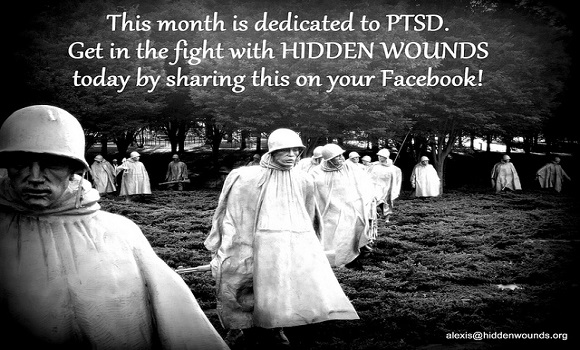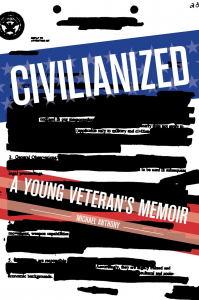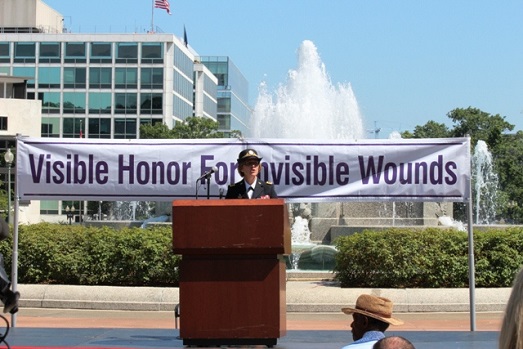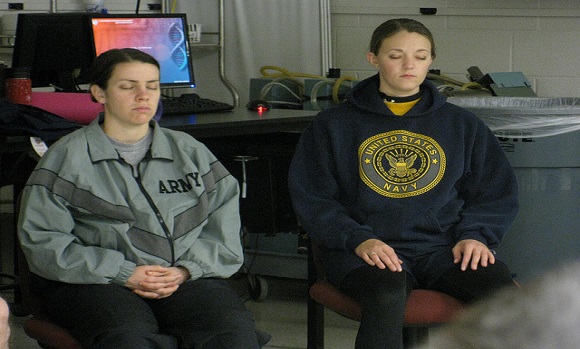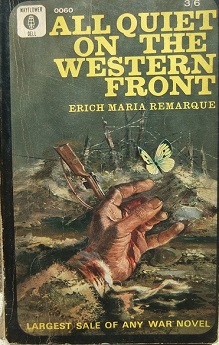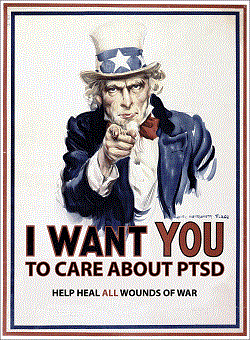On a day like today, Election Day, it’s important to remember that we are the United States of America. We may not always agree on things, but no matter who wins today, we need to do out best to find ways to work together.
Category: Politics / News
How can I help someone with PTSD?
PTSD does not just affect the person who has it. Rather, the condition can also have a negative impact on his or her family and friends. It’s not easy to live with the symptoms of PTSD, and seeing your loved ones suddenly change their behavior can be utterly terrifying. You fear that they won’t ever come back to normal, even when they’re under therapy.
Even though things may get difficult, it is important that you give your full support to the person suffering from PTSD. It doesn’t sound much, but it can actually promote a positive change to your loved one. Here are tips on how you and your family can cope with PTSD:
- Be patient. Even if a person is totally committed to his treatments, it will really take a lot of time before he can recover from PTSD. This means that you really need to be patient throughout the process.
- Learn more about PTSD. If you understand how PTSD works, its effects, and the available treatments, you will be more capable of helping your loved one and keep everything in the right perspective.
- Don’t force the person to discuss his thoughts and feelings. Talking about traumatic experiences can be really difficult, even if you are discussing it with someone close to you. Instead of forcing your loved one to talk to you, give him some space and allow him to open up when he is ready. Just tell him that you are always willing to talk.
- Learn to listen. If they are ready to talk about their traumatic experiences, listen to them without forming any judgments and expectations. Make him feel that you are interested in what he is saying and that you care about him. You don’t necessarily have to give some advice all the time; it’s enough that you just listen to him. Let the professionals give the advice for you.
In some cases, a person suffering from PTSD may feel the need to rehash the traumatic event over and over again. This can be infuriating at times, but avoid scolding him and telling him to move on with his life. Let him talk and lend a listening ear.
Keep in mind that it’s alright if you don’t like what you hear. It’s understandable that traumatic experiences are stories that are really difficult to digest. However, make sure that you still respect their feelings.
Civilianized: A Young Veteran’s Memoir
In this dark humored War Memoir, Iraq veteran Michael Anthony discusses his return from war and how he defeated his PTSD. Civilianized is a must read for any veteran, or anyone who knows a veteran, who has returned from war and suffered through Post-Traumatic Stress Disorder (PTSD).
“I wont soon forget this book.” -Mary Roach
“A must read.” -Colby Buzzell
“[S]mart and mordantly funny.” –Milwaukee Journal Sentinel
“Anthony delivers a dose of reality that can awaken the mind…” Bookreporter
Order your copy of Civilianized: A Young Veteran’s Memoir .
Picture: Flickr/Alexis Lane
Alternative PTSD Treatments
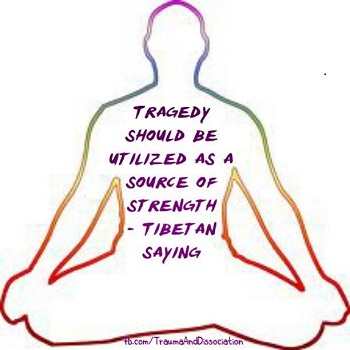 Contemporary Alternative PTSD Treatments…
Contemporary Alternative PTSD Treatments…
Aside from the conventional medications and therapy sessions, war veterans suffering from PTSD can also opt to try alternative treatment to calm their mind.
Usually, contemporary treatments are used alongside with the conventional medications. A popular example of this one is the use of aromatherapy to reduce the discomfort that a patient feels after surgery. In some instances, these alternative treatments are used instead of contemporary ones; as in the case of following a special, healthy diet instead of undergoing chemotherapy.
The list below shows several effective treatments that will help reduce your anxiety and depression. Please keep in mind that you must still consult your personal physician before trying out these contemporary methods:
- Relaxation Techniques
These methods offer a short-term relief for anxiousness or depression. It is also used for patients with inflammatory or heart diseases. Relaxation techniques are effective for adults suffering from generalized anxiety disorder. Unlike the cognitive behavioral therapy, this one can be done at home and without the need for a therapist.
- Acupuncture
This is another therapy that is gaining popularity in the field of PTSD. In fact, the group Acupuncturists Without Borders offers free acupuncture treatment to war veterans. You can find these specialists in more than 25 health facilities across the United States.
Acupuncture is a great alternative for the pharmacological drugs that are commonly administered in hospitals. Aside from being affordable, this treatment does not alter one’s brain negatively and it allows soldiers to carry out their duties while undergoing conventional PTSD treatment.
- Yoga
This is another alternative treatment that is widely embraced by active military while undergoing PTSD treatments. The physical movements of yoga are effective at relieving pain, bringing lasting comfort, and providing adequate physical stimulation at the same time.
People who are haunted by nightmares and anxieties find it difficult to sleep at night. Even though they are not on guard duty anymore, most war veterans have an extremely vigilant nervous system.
With the right yoga and meditation techniques, PTSD patients can learn how to relax their nervous system, allowing them to have restful sleep. Yoga also gives the feeling of safety and calmness.
- Kava
Kava is a plant that thrives in the South Pacific region. It is commonly used for improving one’s mood and relieving anxiety in a safe manner. It can usually be bought in tablet forms. Ask your personal physician first before taking up kava tablets.
Efficacy of Alternative Medications
There is still a lot to learn when it comes to alternative medications for PTSD. Acupuncture, for instance, is proven to be effective. However, it needs to be further evaluated in order to determine its non-specific benefits.
The Department of Veterans Affairs offer evidence-based treatments. Although they do not have specific guidelines for providing alternative PTSD treatments, they are implementing ways to track their effectiveness on patients.
Civilianized: A Young Veteran’s Memoir
In this dark humored War Memoir, Iraq veteran Michael Anthony discusses his return from war and how he defeated his PTSD. Civilianized is a must read for any veteran, or anyone who knows a veteran, who has returned from war and suffered through Post-Traumatic Stress Disorder (PTSD).
“I wont soon forget this book.” -Mary Roach
“A must read.” -Colby Buzzell
“[S]mart and mordantly funny.” –Milwaukee Journal Sentinel
“Anthony delivers a dose of reality that can awaken the mind…” Bookreporter
Order your copy of Civilianized: A Young Veteran’s Memoir .
Picture: Flickr/ Trauma and Dissociation
Seeking Help at the VA for PTSD
War veterans are the ones who usually develop PTSD. This can occur while they are still working with the military or after. Thankfully, the Department of Veterans Affairs has several programs that can help retired soldiers cope up with PTSD. From diagnosing the common symptoms to intensive treatment, the VA has you covered. Moreover, they also employ numerous mental health professionals who relentlessly research on new and effective ways to help PTSD patients and their families.
In this post, you will learn more about the Department of Veterans Affairs’ PTSD treatment programs and how you can apply for help.
Eligibility for VA PTSD Services
Every war veteran has a chance to be eligible for the VA’s PTSD services. Here are the factors that can affect your eligibility:
- You managed to perform active military services when you were in the Navy, Air Force, Marines, Coast Guard, or Army.
- You were discharged by the military under honorable conditions.
- You are part of the National Guard or Reservist corps and you completed a federal deployment in a combat area.
However, you should also take note of the following:
- Health care services are also available for veterans who did not serve in combat.
- You can still use the veteran’s health care services, even on non-medical injuries or health concerns that are connected to military service.
- The benefits that you get from another health care system are different from the benefits at the Department of Veterans Affairs.
- The health care facilities at VA hospitals are available for both men and women.
Available PTSD Treatments
Thanks to the advancements in medicine and technology, veterans suffering from PTSD can choose from a variety of treatments. Below is a list of mental health treatments offered by the VA:
Cognitive Behavioral Therapy (CBT)
This one is a type of counseling method and is considered as one of the most effective methods for treating PTSD. The VA offers two types of therapies under CBT. One is the Cognitive Processing Therapy (CPT) and the other one is Prolonged Exposure treatment.
CPT will teach you effective ways for handling any distressing thoughts that come in your head. Therapists can walk you through your previous experience (in a safe manner) and help you understand the situation better. If you know how the traumatic experience changed your outlook and behavior, it will be easier for you to cope with it.
CPT has four main processes:
- Diagnose any PTSD symptoms and learn how the therapy can help
- Gaining more awareness about your inner feelings
- Cognitive restructuring – the processes of challenging your thoughts and feelings
- Understanding the sudden changes in your beliefs after facing a traumatic experience
Aside from frequent meetings with a mental health professional, you will also be given practice exercises that will develop your emotional and cognitive well-being, even when you’re outside the therapist’s office.
The second option for the CBT is the Exposure Therapy. As the name implies, this treatment requires the patients to be repeatedly exposed to any feelings or situations that they have been avoiding. This will teach war veterans that not everything that reminds them of a traumatic event should be avoided.
After identifying all of the situations that you commonly avoid, your therapist will require you to confront all of them until your stress levels or fears decrease.
Similar with the CPT, the Exposure Therapy also has four parts:
- Educating yourself about the symptoms of PTSD and how Exposure Therapy can help you out
- Training how to breathe. This may sound like a silly task, but it is actually an effective relaxation technique that will help you overcome stress.
- Facing the normal and safe situations that you commonly avoid. The more you become exposed to these situations, the easier it will be to get over your PTSD.
- Discussing the traumatic experience and learning how to control your thoughts and feelings.
Exposure Therapy requires around 15 sessions with your therapist and practice assignments that you need to do on your own. As time goes by, you will be able to control your reactions when faced with stressful situations.
Eye Movement Desensitization and Reprocessing (EMDR)
In this type of therapy, you will be required to focus your attention on hand gestures while you are discussing the traumatic events that triggered PTSD symptoms.
When our eyes are following fast movements, it becomes easier for our brains to process traumatic events. If you have other things to focus on while discussing these memories, your behavior will change as time goes by. It will also help that you relax and efficiently handle any emotional distress in the future.
EMDR is composed of four parts:
- Identifying the traumatic memory or belief that triggered any negative reactions
- Learning how to desensitize yourself when recalling traumatic memories. In this stage, you will create mental images while performing eye movements that your therapist will teach you
- Reinforcing positive thoughts
- Undergoing a body scan. The therapist will focus on tension in your body in order to determine the additional issues that you need to face in the future.
After the EMDR sessions, you will have a more positive outlook when recalling traumatic events in your life. It usually takes around four sessions with a therapist to see the improvements.
PTSD Services offered by the VA
- Thorough mental health testing
- Providing medications
- One-on-one psychotherapy sessions
- Therapy sessions for the family
- Conducting of group therapy sessions. The topics covered in these sessions include stress management, searching for combat support, and strengthening relationships with the family. There are also support groups for war veterans with a specific type of trauma.
The treatments offered by the VA are thoroughly researched to make sure that they are effective on war veterans. However, please be reminded that the programs offered may vary per VA hospital. In some cases, the treatments may also need a referral. Your personal physician can guide you in selecting the program that suits you best.
Civilianized: A Young Veteran’s Memoir
In this dark humored War Memoir, Iraq veteran Michael Anthony discusses his return from war and how he defeated his PTSD. Civilianized is a must read for any veteran, or anyone who knows a veteran, who has returned from war and suffered through Post-Traumatic Stress Disorder (PTSD).
“I wont soon forget this book.” -Mary Roach
“A must read.” -Colby Buzzell
“[S]mart and mordantly funny.” –Milwaukee Journal Sentinel
“Anthony delivers a dose of reality that can awaken the mind…” Bookreporter
Order your copy of Civilianized: A Young Veteran’s Memoir .
Picture: Flickr/Army Medicine
11 Common PTSD Myths Debunked
One challenge that victims of PTSD have to face is the judgment of other people due to misinformation. Because of the myths surrounding this medical condition, the relationships of the patient with his or her loved ones are often strained.
The prejudice and maltreatment of PTSD patients have been around ever since human beings started to wage wars against each other. Even though extensive research has already been conducted regarding the psychological effects of war on soldiers, there is still a lot to learn about PTSD. That is the reason why these myths are still proliferating.
So to help you better understand combat-related PTSD, here are several myths that were already debunked a long time ago:
Having PTSD means you are mentally weak
This myth is one of the oldest and most difficult to combat. Having this type of condition is not a sign of mental weakness, or even weakness of character. Aside from the internal strength of an individual, there are a lot of factors that can affect the development of PTSD. Examples of this are the type of trauma, circumstance, duration, and the number of traumatic events that happened throughout a person’s lifetime.
PTSD also occurs when the individual does not have a solid interpersonal support system. Sadly, a lot of war veterans do not get the support that they need because of social stigma and misunderstanding.
Any experience can be a traumatic one
It is true that a lot of events that happen to us can become stressful. However, there are still several criteria that need to be met before calling a certain event as “traumatic.”
The criteria are as follows:
- Being exposed to sexual violence or near death events that may lead to serious injuries.
- The person must directly or indirectly be involved in the traumatic experience, or he has witnessed it in person.
When you say indirectly exposed, this pertains to hearing and seeing the details of the traumatizing experience. An example of this one is the drone pilots. They may not be in the middle of the warzone, but they are still exposed to the horrors of the battlefield because of the things that they see and hear on the screen. In addition, they also enter and exit the war zone regularly.
A person can easily develop PTSD after being exposed to a traumatic incident
When faced with a traumatic experience, you can expect that you will be mentally, emotionally, and physically stressed. However, it does not mean that you will already develop PTSD immediately. In order to be diagnosed with this condition, the feelings of extreme fatigue, stress, or anxiety should last for more than a month. In addition, people who suffer from PTSD also find it difficult to focus on their work and personal life.
People who suffer from PTSD are automatically crazy and extremely dangerous
Class war movies and sensationalized news reports have taught us that war veterans suffering from PTSD are crazy and should be avoided at all costs. Keep in mind that this stereotype is entirely wrong. This type of condition should never be associated with psychosis and extreme violence. PTSD is mostly about abrupt mood changes and reliving distressing memories. Never use the word crazy when talking about patients suffering from this condition because it damages their reputation and stigmatizes them further.
People with this condition are completely useless in work environments
A lot of soldiers do not want to seek treatment for PTSD because they fear that they will lose their ranks in the military. This is also the same with other workers who have developed the same condition.
Sadly, what people do not know is that they can still keep their regular jobs while getting PTSD treatments at the same time. One should not be too scared when diagnosed with this condition because it is very manageable.
PTSD is easy to get over with as time goes by
Thanks to modern PTSD treatments, it is now easier for war veterans to return to their normal lives. However, this condition does not instantly go away once you take some anti-depressants. Sometimes, conquering PTSD is a life-long journey. While most people learn to cope on their own, a lot of patients still seek professional guidance every once in a while.
War veterans who developed PTSD are not considered as part of the “wounded soldiers”
That is because you cannot see any huge scars or other types of physical injuries. However, one should remember that veterans with PTSD have made a lot of sacrifices to protect the country. Psychological injuries are quite the same with the physical ones. Both are collateral war damages that are inevitable.
You cannot do anything for war veterans (or other people) suffering from PTSD
This condition is actually very responsive to treatment. And with the advancement of medical technology, there is currently a multitude of ways to treat PTSD. If your current treatment does not work for you, you can still choose other options like cognitive behavioral therapy or prolonged exposure treatment. Seeking help from a professional is the first step in choosing an option that works best for you.
PTSD only targets a specific age group
Keep in mind that children can also experience PTSD. But as discussed in Chapter 1, their symptoms may vary depending on their age.
You only need one treatment for PTSD
Not necessarily. The type and complexity of the treatment will still depend on the person suffering from this condition. If he is showing severe symptoms, it means that he may have to undergo different types of therapies. Doctors may also ask him to take several antidepressants.
Therapies never work
Therapies are effective at treating patients because it helps them understand what PTSD is all about. It also helps health professionals to assess the patient and develop ways to help them cope with their situation. With methods such as exposure therapy and cognitive behavior therapy, people with PTSD will learn how to face their fears and deal with bad memories in a healthier and safe manner.
Civilianized: A Young Veteran’s Memoir
In this dark humored War Memoir, Iraq veteran Michael Anthony discusses his return from war and how he defeated his PTSD. Civilianized is a must read for any veteran, or anyone who knows a veteran, who has returned from war and suffered through Post-Traumatic Stress Disorder (PTSD).
“I wont soon forget this book.” -Mary Roach
“A must read.” -Colby Buzzell
“[S]mart and mordantly funny.” –Milwaukee Journal Sentinel
“Anthony delivers a dose of reality that can awaken the mind…” Bookreporter
Order your copy of Civilianized: A Young Veteran’s Memoir .
Picture: Flickr/MilitaryHealth
Annotative Essay on the book: ‘All Quiet on the Western Front,’ by E.M. Remarque
When soldiers are sent to the trenches of war, amongst the necessity for their rifles, daily food rations and combat boots, there is also a necessity for them to have left their loved ones behind. No families are allowed on the front lines, for just as a man would never masturbate in front of his dear mother; neither would he commit an act of war. Those things which happen during battle are for warriors’ eyes only. But what E.M. Remarque does in his work of fiction, All Quiet on the Western Front, is to bring war to the eyes of those who have never seen it; and it is through his detailed depiction of the inner landscape of a soldier’s soul, that he gives vision to the families, and creates a truly unique work of literary fiction.
As a reader I felt more as though I were reading a man’s private journal than reading a work of fiction, for in the same way that fiction can feel more real than non-fiction, the author found a way to have his story told fully and personally. This is excellently done on E. M. Remarque’s part, because when an author writes a good book, it truly should act as a journal for the author’s character, and become a journal for the reader. A good book forces a man to convalesce into himself and write in the margins his deepest thoughts; spurred on by a word or phrase. A typical work of fiction or non-fiction hardly drives a reader to write in the margins, or to stop and pause as he ponders over a thought which has, seemingly, randomly popped into his head. The author’s greatest achievement isn’t his descriptions of the actual landscape of war, nor his political descriptions and breakdowns of the madness of war, although both are well done, his real style is in his ability to bare a man’s/character’s soul and have the reader feel as though they are reading non-fiction rather than fiction.
“We have become wild beasts. We do not fight, we defend ourselves against annihilation. It is not against men that we fling our bombs, what do we know of men in this moment when Death is hunting us down—now, for the first time in three days we can see his face, now for the first time in three days we can oppose him; we feel a mad anger. No longer do we lie helpless, waiting on the scaffold, we can destroy and kill, to save ourselves, to save ourselves and to be revenged.”
It is through detailed musings like this which we learn more about the author, the characters, and the story itself, then we could through the scenery of the trees, scenes of actual battles, or dialogue. As stated before, the author excels in all three aspects, but what truly makes his work unique is the inner, not the outer. Although, in order for the author to truly make his internal musings as powerful as he does, he sets things up by first building up the scenery of the war, “The wire entanglements are torn to pieces. Yet they offer some obstacle. We see the storm-troops coming…” deepens it with the scenes of action, “We make for the rear, pull wire cradles into the trench and leave bombs behind us with the strings pulled…”, and only then does he delve into the inner character workings and musing. “We have become wild beasts. We do not fight, we defend ourselves against annihilation…”
|
“E. M. Remarque shows us that what drives his story is the inner parts of a man.”
|
What is absent from the author’s story is any plot or typical character development. There is no arch. No one, or nothing, is keeping Paul from his true love or his goal; nor is Paul fighting for any altruistic reason, he neither seems to be fighting against any real enemy or even himself, and he fights for no reason. Paul is merely a man struggling to exist as a soldier in a war. The author fills in the blanks and the storyline with, instead of a typical hero/love plot, reflections from a young soldier as he struggles through war and ultimately ends up with nothing and no one. There is no growth. No middle. No climax. No end. No conclusion. But the story misses nothing, and through the author’s technique of internal character exploration, the story is carried on even though we have no definitive storyline to carry us through. War calls for no further subtext than a soldier trying to stay alive, and keep his sanity. There is no different war story to be told. This is what the author gives us.
A book made of such mental vivisection that if it were any more real, readers would have to be treated for PTSD.
“And this I know: all these things that now, while we are still in the war, sink down in us like a stone, after the war shall waken again, and then shall begin the disentanglement of life and death.”
“The days, the weeks, the years out here shall come back again, and our dead comrades shall then stand up again and march with us, our heads shall be clear, we shall have a purpose, and so we shall march, our dead comrades beside us, the years at the front behind us: –against whom, against whom?”
What I’ve learned from this book is that character and internal landscape is king, and combined with good scenery, good action, and good dialogue, a classic can be born. E. M. Remarque shows us that what drives his story is the inner parts of a man, but in order for that to work the scenery must be setup, then the scene itself, and then the inner musings.
For more annotative essays and other book related stuff click here.
Picture: Flickr/ Gwydion M. Williams
6 Interesting Facts about the Iraq War
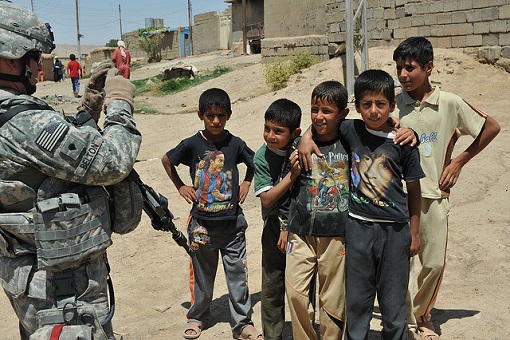 Interesting Facts about the Iraq War
Interesting Facts about the Iraq War
(for the average reader)
While many people hear about the “War on Terror” as a catch phrase thrown around on propaganda filled, politically biased, lie-filled news stations most people couldn’t even point to the country in question. A lot of misinformation is thrown around in regards to the Iraq War either for sensationalistic purposes in an attempt to please corporate sponsors with better ratings or for politically motivated agendas. In reality a lot of people have no real idea why the war was fought, who against (IE: who’s doing the actual fighting), or in some cases where it all is even taking place. There is a lot of information about the Iraq War beyond what can be found in conventional sources.
Fact #1. Many of the “terrorists” are young, well-educated college students (and some aren’t even “terrorists,” they’re just paid thugs)
The general depiction of middle-eastern terrorists is of the equivalent to what we in the United States would consider a redneck. Generally older, “gibberish” speaking, bearded suicide bombers. While movies like Team America, True Lies, or Iron Man don’t help this stereotype in all actuality most of the extremists are attending, or were enrolled in prominent universities. They are between the ages of 20 – 27, male, and often know multiple languages including English in some cases. Much like the radicals seen during the 60’s in the United States or the Occupy Wall Street movement of 2011. Additionally, the motives of these Iraqi fighters are not “death to America” as often is depicted but more out of a religious extremism also seen with certain factions of Christians in the United States. What sets these individuals apart from some of the more radical elements in the United States is nothing more than semantics more often than not. Furthermore, in our briefings before going to Iraq, we were informed that a lot of the fighters in Iraq and Afghanistan were just paid thugs. The terrorists/insurgents would go out and find impoverished people, maybe just a young man trying to feed his family, and the terrorists would offer him money to maybe place a bomb on a street, or fire a few mortars on an American base, etc. Even suicide bombers are not always “fanatics.” There have been many reports of terrorist groups, various people, and even entire countries, offering money, as high as 25,000, for anyone who will wear a suicide vest (the money would go to their family of course). This many seem ridiculous that someone would do it for the money, but in war-torn countries where the life expectancy is already lowered, and fighting is an everyday occurrence, the thought of being able to provide for your family can be and overriding feeling (and I’m sure there’s still a little religious fanaticism involved, but there’s a good bet that a lot of these people wouldn’t have worn the vests without money going to their families).
Fact #2. Believe it or not: the wars in Afghanistan and Iraq are two different things
While these two wars often get lumped together they are two separate conflicts. The war in Afghanistan was a result of the hostile actions taken against the United States by a militant group believed to have originated and was currently in control of Afghanistan: Al-Qaida. On the other hand, the war in Iraq occurred as a result of, then believed, the countries possession of weapons of mass destruction IE: chemical, biological, nuclear based weapons. While over time these two conflicts have merged into a universal conflict they did not have a singular theme at the time of the United States involvement
Fact #3. Believe it or not: Iraq and Afghanistan are not geographically connected, or even that similar
Much like the specific conflicts and their origins, many people consider the countries as one place or even geographically connected. This is far from the truth. Iraq and Afghanistan are over 1000 miles apart, separated by Iran. Additionally the cultures of both countries are vastly different. Iraq’s economy is almost entirely based on the oil industry that is responsible for almost 90% of the world’s oil. Afghanistan, on the other hand, is agrarian at best with the majority of Afghan citizens living below the poverty line (and a lot of profits actually come form poppy fields–in fact to keep tribal leaders happy, some U.S. military units were actually tasked with protecting the poppy fields from the Taliban). Afghanistan is far more similar to rural places in Africa than it is to Iraq.
Fact #4. The actual Iraq War lasted a little over a year
Despite popular belief, the most recent Iraq War ended in 2006 with the death of Saddam Hussein–with many prominent American’s even declaring it over at that time. After Saddam’s death a new government was put in place, however, there has been constant infighting between the two dominate Islamic religions, Sunni and Shiite, for control of the country. Combine this with various actions on the part of smaller, more extremist groups vying for control. As a result of this chaos, the United States along with many other countries and international organizations have had to moderate the violence within the country. The ongoing struggle is a direct result of the conclusion of the war.
Fact #5. The whole country isn’t constantly in a state of Chaos
A lot of the pictures and videos we see coming from Iraq are of various bombings and shootings, etc. However, outside the city of Baghdad and a few specific locations the majority of the country is relaxed and living life like any other day. Similar to what you would see in the United States after a major natural disaster. While citizens in places near the coast of Florida can be seen trying to pick up the pieces after a hurricane, residents in unaffected areas of Florida or even other states go about their lives like they would normally. Most Iraqis get up, go to work, and come home, repeat just like we do.
Fact #6. The prominent threat is homemade bombs
We see a lot of gun fighting and such on TV and in movies related to the Iraq war but the major problem isn’t from one on one combat but from Improvised Explosive Devices (IEDs). These can range from a plastic jug of gasoline with a fuse to cell phone detonated explosives. The issue with these compared to standard gun fights are that the extremists using them do not have to be present when they go off or even been within trigger range in some cases. Much like landmines during WWII, these are often set it and forget it type of weapons that can result in casualties and fatalities for both the intended target and any unintended personnel. Additionally, since they can be made out of anything, finding and defusing these devices is akin to finding a needle in a hay stack–a needle that will explode if you don’t find it.
Picture: Flickr/The U.S. Army
Is PTSD Genetic? Can PTSD be passed onto my children?
Can PTSD be passed onto my children?
Post-Traumatic Stress Disorder (PTSD) is a psychiatric ailment that affects many people around the world. This stress disorder can affect anyone and it is typically caused by uncontrollable or unpredictable traumatic events. In most cases, PTSD symptoms appear after several days or hours of certain event. However, there are times that it takes up to few months or weeks for the symptoms to manifest themselves. Common PTSD’s causes may be because of sudden death of loved ones, assault, car or plane crashes, rape, war, natural disasters, kidnap, childhood neglect, physical abuse and other traumatic events.
|
“Avoiding being reminded of the event, including becoming detached from friends and becoming emotionally withdrawn, is another sign of PTSD.”
|
But can we tell just by taking a simple blood test if we are predisposed genetically to PTSD? This question has been the biggest issue internationally. International researchers have found a genetic marker that is linked to PSTD in the blood samples of the conflict zone based Marines. This team of researchers is studying to figure out who is more resilient to PTSD, and who is more at risk for PTSD.
Women are more likely to develop this stress disorder than men. Signs tend to cluster into three main areas. One is when a person relives the event through vivid images and nightmares together with an extreme reaction like heart palpitations, uncontrollable shaking and chills. Avoiding being reminded of the event, including becoming detached from friends and becoming emotionally withdrawn, is another sign of PTSD. The last main signs of this disorder are when a person is hyper aroused, irritable, startled easily, and/or has difficulty concentrating and trouble sleeping.
The idea that your genes play a role in whether you develop this stress disorder has been a famous focus of frequent research. Scientists have actually discovered, in mice, the genes that regulate fear. The lack of a brain chemical that is regulating the fear (which is called peptide that releases gastrin), led to fear response that is greater among rodents. In another study, mice that do not have a protein that is necessary to form the so called “fear memories”, have less tendency of freezing up and willing to explore unfamiliar spaces (think of the cartoon Tom and Jerry, and how Jerry (the mouse) wasn’t afraid of Tom the cat. This could have, realistically, been because Jerry lacked a certain protein in his brain that would’ve told him to be afraid of Tom). This is important to note because many people believe that PTSD is an unnatural response, but PTSD can often be a natural response to a somewhat unnatural situation. The brain is almost wired to respond in such a way.
|
“It’s been said that a single person with PTSD infects/affects/effects up to seven individuals with symptoms.”
|
There are also studies on twins which show that heredity is accounting for about 30 percent of the differences responding to trauma. Identical twins are much more likely to develop this stress disorder than the fraternal twins. Another research has looked into the role of inherited mental disorders, brain differences or tendencies of addiction.
An unusual research avenue is the contribution of our immune systems to the development of the symptoms of PTSD or if it has also a big role in this development. Prior studies showed that people who have been diagnosed with PTSD as compared to individuals without PTSD suggest that their differences in their genes in relation to inflammation, plays a role.
Therefore, there is a tendency that PTSD can be acquired genetically, however, there is no positive result as researchers are still going on progress of having some clues as to what may predict resilience and risk.
One thing to keep in mind about PTSD, is that even though it may or may not be genetic, a father or mother can still pass on PTSD to their children, and loved ones, through proximity. It’s been said that a single person with PTSD infects/affects/effects up to seven individuals with symptoms. Think of it as the flu. A father gets sick with the flu: he’s lethargic, has a fever, diarrhea, and he’s nauseous. Several days pass and the father’s son gets sick. The son has all the same symptoms as his father, he’s lethargic, nauseous, has diarrhea, etc. Then, the next thing you know, the sister gets sick, the mother, and the whole house is laid up in bed. Now, take that same scenario and imagine a man with PTSD. He’s irritable, short-tempered, has trouble sleeping, is anxious, and is emotionally withdrawn. How long do you think it’ll be before his short-temper and irritability is passed along to his wife and children?
In a sense, it’s the old nature vs nurture debate. Are we predisposed to PTSD or brought up into it?
Picture: Flickr/Ilona Meagher
Blackout Poetry: Combat Action Badge
 This poem/post will probably be a little more controversial than most Blackout poetry posts. That’s because it involves Combat Action Badges, and the current debate regarding them, and when/how/if/under what circumstances they should be awarded. My position on this is somewhat unique, though I know I’m not alone…
This poem/post will probably be a little more controversial than most Blackout poetry posts. That’s because it involves Combat Action Badges, and the current debate regarding them, and when/how/if/under what circumstances they should be awarded. My position on this is somewhat unique, though I know I’m not alone…
This article originally appeared in the Army Times and was over whether or not Combat Action Badge’s (CAB’s) should be retroactively awarded to soldiers.
|
“We don’t fight wars for awards.”
|
Here’s my take: Back when I was in the army, and serving in Iraq, I was awarded a CAB while serving in Mosul, Iraq. Now, at the time, CAB’s were a huge thing. Everyone wanted one. Some people wanted CAB’s so bad that they were even willing to lie to get them and “pretend,” as though they had been in a direct combat situation. It was a sad, sickening, spectacle. Several of my commanders lied about being in combat (and then backed up one another’s stories) just so they could get the coveted “Combat Action Badge.” This, ultimately, led myself and several fellow soldiers to come up with the saying “Never trust a soldier with a chest full of metal, unless the metal is shrapnel.” Lying was so prevalent that towards the end, the CAB, and several other awards, meant nothing to us.
People were trying so hard to get CAB’s that they were petitioning the Army, even back then, to change the regulations. Some soldiers wanted CAB’s for being around unexploded ordnance (I kid you not) others wanted unit-wide CAB’s since some of us had been in combat (that is actually too ridiculous for me to be able to explain in a blog post). And the coup de grace of all this is that at the end of my deployment, several fellow soldiers wanted me to lie about the events of an attack so that another soldier could be awarded a CAB. I refused, and the soldiers got upset with me, as though I was the asshole.
Anyway, if you can’t tell by now, I have no respect for soldiers, or anyone else, who feels the need to bitch, complain, and whine that they don’t have enough awards to pin on their chests.
We don’t fight wars for awards. Act like it!
Poem Transcription:
Debate
Over
CABs
The Combat Action Badge
Was made to
Award Veterans
They want to be recognized
For more military/war related blackout poetry click here.
To read more about the military experience and CAB’s check out the following book:
Bowe Bergdahl – Is He a Traitor?
U.S. Army Sgt. Bowe Bergdahl, the final remaining captured American soldier, has been released.
U.S. Army soldier Bowe Bergdahl has recently been released from capture, after being held captive by Taliban insurgents for five years. The U.S. released five prisoners from Guantanamo Bay in exchange for Bergdahl. The prisoners are: Abdul Haq Wasiq, Mullah Norullah , Khairullah Khairkhwa, Mohammed Nabi, Mohammad Fazl (all are former high ranking Taliban officials, and are straight up bad dudes).
The White House released the following statement on the matter:
“Today the American people are pleased that we will be able to welcome home Sergeant Bowe Bergdahl, held captive for nearly five years. On behalf of the American people, I was honored to call his parents to express our joy that they can expect his safe return, mindful of their courage and sacrifice throughout this ordeal. Today we also remember the many troops held captive and whom remain missing or unaccounted for in America’s past wars. Sergeant Bergdahl’s recovery is a reminder of America’s unwavering commitment to leave no man or woman in uniform behind on the battlefield. And as we find relief in Bowe’s recovery, our thoughts and prayers are with those other Americans whose release we continue to pursue. . . .”
It’s a great moment to have a soldier return home after being a POW; however, I’m afraid that Bowe’s welcoming will be short lived. For many people in the country, outside of the ardent military news followers, the most surprising aspect of this story isn’t that Sergeant Bergdhal’s has been release, it’s that there was still even a capture American soldier in the first place. The wars of today are not like the wars of yesterday. In WWI, WWII, Korea, Vietnam, etc, the entire nation was enthralled in the affairs of the military and wars. But today? Many people wear t-shirts, and have bumper stickers on their cars, but people in this country are not as effected, and affected, by the wars as they used to be. If you’re been following the news, it means that Bergdahl is coming home to a country that is politically torn apart, fighting its way out of a recession, and that after five years in the care of the Taliban, he’ll be coming home to receive VA care from a broken system.
We went to war with Afghanistan because the Taliban were allowing terrorists to freely train under their tutelage, protection, and control. Now we are releasing five high ranking Taliban insurgents. We will be leaving Afghanistan in a matter of years, and Bergdahl, along with his fellow veterans, is coming home to a country that had forgotten about him, forgotten about the war, and to a government that sees its veterans as nothing more than a strain on the bank account. Many are talking about Bergdahl’s release, but we cannot allow it to distract us from the issues facing veterans and how it is, and why, we got ourselves into this mess in the first place.
But that’s not the end of it. There have been rumors for years that Bergdahl wasn’t a POW, but was instead a deserter. There are stories that Bergdahl willing walked off base. That he was anti-American and a traitor. Many people are saying that because of this he didn’t deserve to come home, that he shouldn’t have been rescued and that he certainly shouldn’t have been traded for known terrorists. These are all good, valid points; however, these people are missing one important thing. Bergdahl is an American soldier, and the facts are that we don’t know the facts. The American justice system works on the notion: Innocent Until Proven Guilty. Many people are willing to hang Bergdahl before the full truth is known. Those people are misguided. At the moment, Bergdahl is an American soldier who was a POW, who was held against his will (he tried to escape several times), and who withstood harsher conditions than 99.9% of American’s could ever understand, or grasp. If he’s guilty of desertion, sure, absolutely, give him a dishonorable discharge, but he’s still an American, and he’s still warranted the basic American principle of Innocent Until Proven Guilty. Because if we don’t live by our principles, then what were we fighting for over there? I fought, I’ve been there, and it’s these basic principles that men and women have fought and died for. It’s moments like these which test our country most.
–Photo: U.S. Army/Flickr
